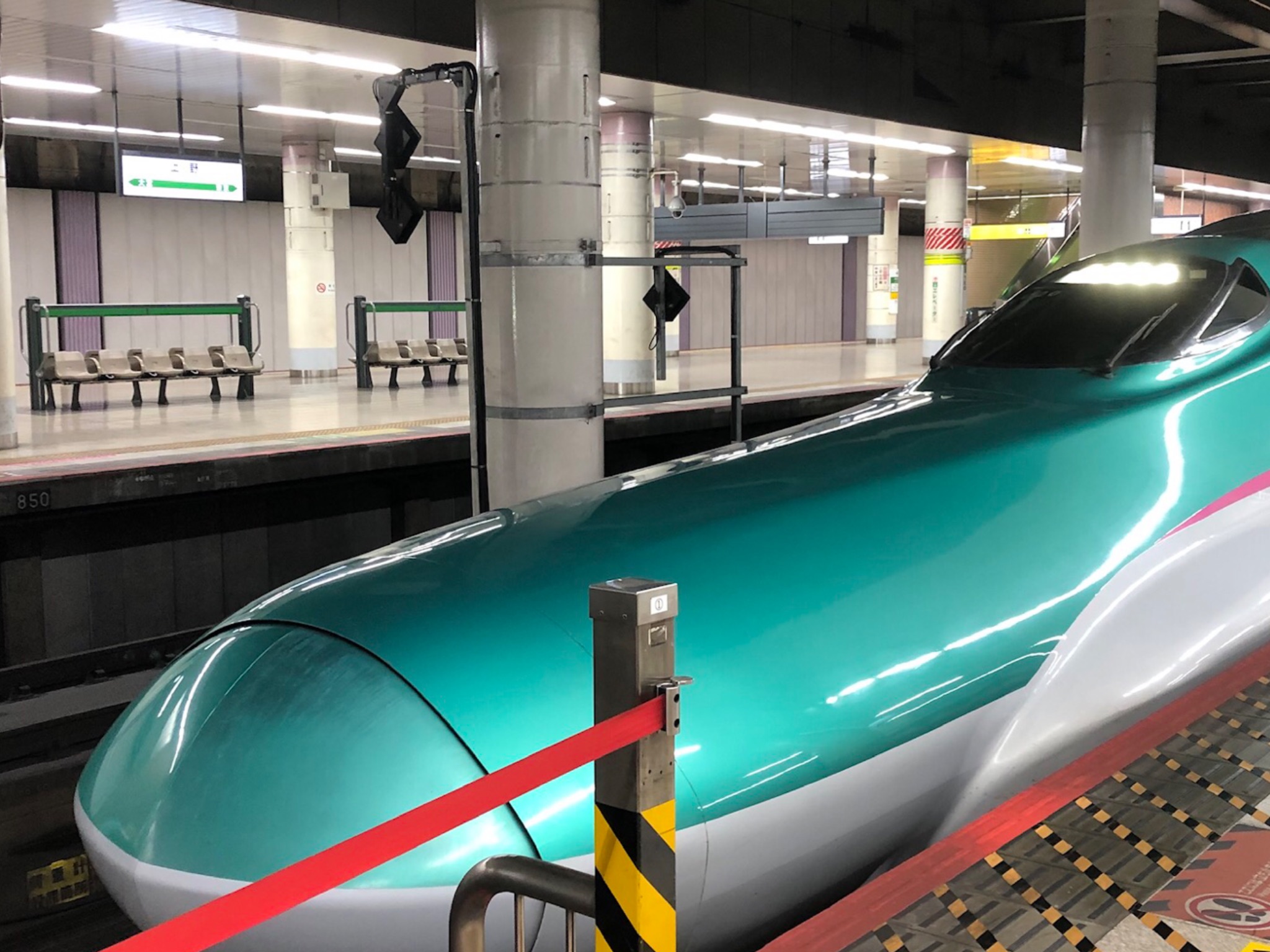Shinkansen meaning in Japanese

Shinkansen meaning
What does Shinkansen mean in Japanese?
“Shinkansen” is a Japanese term that translates to “new trunk line” or “new main line” in English. It refers to the high-speed bullet train network in Japan, known for its efficiency, speed, and advanced technology. The Shinkansen was the world’s first high-speed railway system and has been in operation since 1964. It connects various major cities in Japan, including Tokyo, Osaka, Kyoto, Hiroshima and Fukuoka, allowing passengers to travel quickly and comfortably between these destinations. The Shinkansen trains are renowned for their punctuality, safety, and sleek design.
Etymology of “Shinkansen”
The term “Shinkansen” consists of two Japanese words: “shin” (新) and “kansen” (幹線).
- Shin (新): The word “shin” means “new” in Japanese. It also signifies the innovative and modern nature of the Shinkansen when it was introduced in the 1960s. At that time, it represented a revolutionary advancement in railway technology.
- Kansen (幹線): The word “kansen” translates to “main line” or “trunk line” in English. In the context of the Shinkansen, it refers to the primary railway routes connecting major cities in Japan. These routes form the backbone of the Shinkansen network.
Therefore, the term “Shinkansen” can be understood as “new trunk line” or “new main line.” It reflects the concept of a new and advanced high-speed railway system that serves as the main transportation artery in Japan, connecting major urban centers across the country.
Some more details about the Shinkansen:
- History: The first Shinkansen line, called the Tōkaidō Shinkansen, was inaugurated on October 1, 1964, just in time for the Tokyo Olympics. It initially connected Tokyo and Shin-Osaka, significantly reducing travel times between these two major cities. Over the years, the Shinkansen network expanded, and multiple lines were added, covering more regions of Japan.
- Speed and Technology: The Shinkansen is renowned for its high speeds. The trains can reach maximum speeds of up to 320 kilometers per hour (200 miles per hour), although the actual operating speeds may vary depending on the line and specific train model. The trains use advanced technology, including advanced braking systems, aerodynamic designs, and dedicated tracks, to ensure a smooth and safe journey.
- Efficiency and Punctuality: One of the most impressive aspects of the Shinkansen is its remarkable punctuality. The average delay is often measured in seconds, and the system has maintained an exceptional record for reliability and on-time performance. The efficient operation is achieved through meticulous scheduling, rigorous maintenance, and strict adherence to safety protocols.
- Comfort and Amenities: Shinkansen trains offer a comfortable and pleasant travel experience. The seats are spacious and often equipped with amenities such as power outlets, tray tables, and reclining options. Passengers can also enjoy services like onboard Wi-Fi, vending machines, and dining cars that offer a variety of delicious meals and snacks.
- Safety: Safety is a top priority for the Shinkansen system. The tracks are equipped with advanced signaling systems and automatic train control mechanisms to ensure safe operations. Additionally, the trains undergo regular inspections and maintenance to guarantee their reliability and passenger safety.
- Environmental Benefits: The Shinkansen is known for its eco-friendly attributes. The trains are powered by electricity, and efforts have been made to minimize energy consumption and reduce carbon emissions. The system has contributed significantly to reducing traffic congestion and promoting sustainable transportation in Japan.
- Global Influence: The success and reputation of the Shinkansen have had a significant impact on high-speed rail development worldwide. Several countries have looked to Japan’s expertise and technology as a model for their own high-speed rail projects.
The Shinkansen is not only an integral part of Japan’s transportation infrastructure but also a symbol of the country’s technological prowess and commitment to innovation. It has revolutionized travel within Japan and continues to be a source of pride for the nation.










